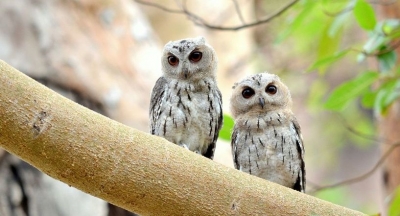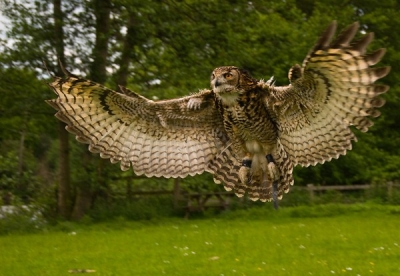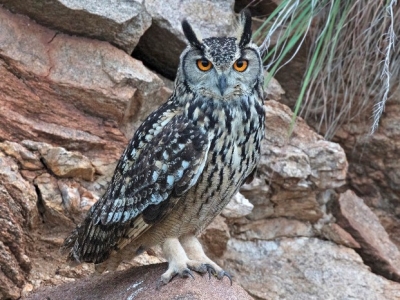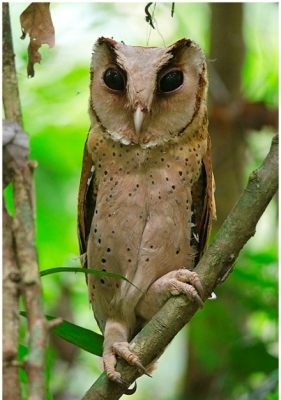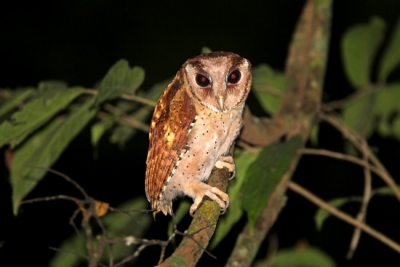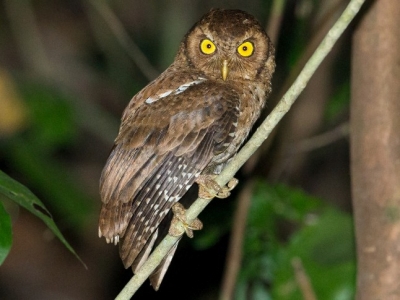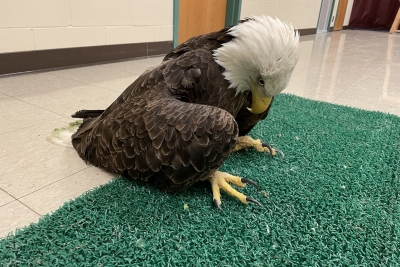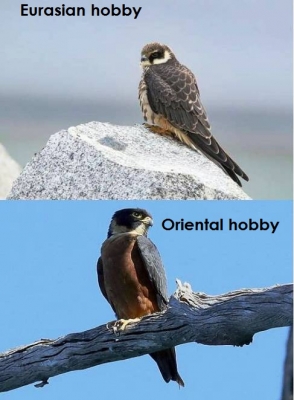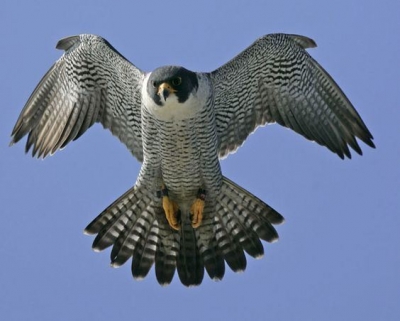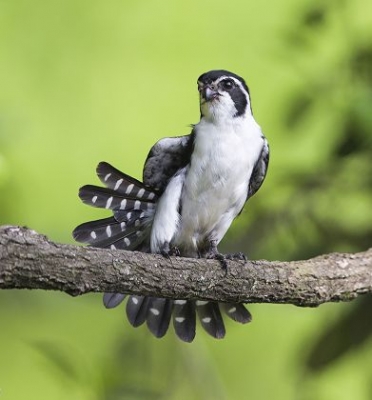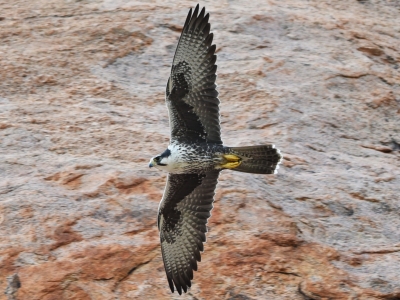Where can we see the spot-bellied eagle-owl in India?
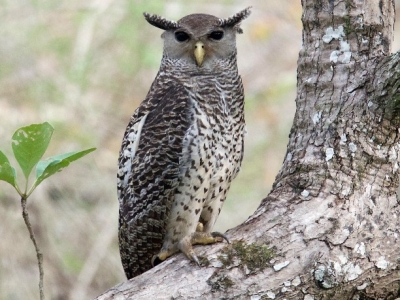
The spot-bellied eagle-owl, or Bubo nipalensis, is an immense and intimidating owl which is considered part of a super-species of owl along with the barred eagle-owl. It is silver-gray or brown in colour with a large yellow beak, black eyes and feathered legs and feet. Its ear tufts or sideward-facing ‘horns’, are long and sweeping, giving it a formidable and unmistakable appearance. The overall plumage of this owl is dark brown on the head, upper wings and upper parts. The throat and the underparts are pale brown. The sides have black and white horizontal stripes.
It is a forest dwelling species, and is also known as the forest eagle-owl. It is found in the Indian subcontinent and in south-east Asia including Burma, central Laos and central Vietnam. In India it is found in the lower Himalayas in Kumaon and also in Tamil Nadu, Kerala, Goa, Karnataka, Maharashtra, Sikkim, Assam, Arunachal Pradesh, Nagaland, Meghalaya, Manipur, Tripura and Mizoram.
It is nocturnal by nature and will roost in dense foliage of large trees during the day. However it has been found that these owls will also hunt during the day when possible, especially in forests with minimal human disturbance. It is a bold and fearless hunter and will often hunt prey that is heavier than itself. Its primary prey are pheasants, jungle-fowl, peafowl and game-birds, but it will also hunt jackals, hares, civet cats, snakes, monitor lizards, monkeys and even small-sized deer!
This owl usually nests in large tree cavities. It will also make use of abandoned large stick-nests of eagles, vultures or kites and occasionally nests in sheltered rock crevices, fissures and caves.
This owl is a non-migratory, resident bird. The female lays 1 white egg at a time and carries out incubation alone. It is listed under ‘Least Concern’ in the IUCN Red List, but is threatened by locals and poachers due to its formidable appearance and eerie scream (It has a low, double hoot, ‘hoohoo’ and a mournful mewing scream that rises and falls in a blood-curdling ‘njaa-uuuw’).
Picture Credit : Google
